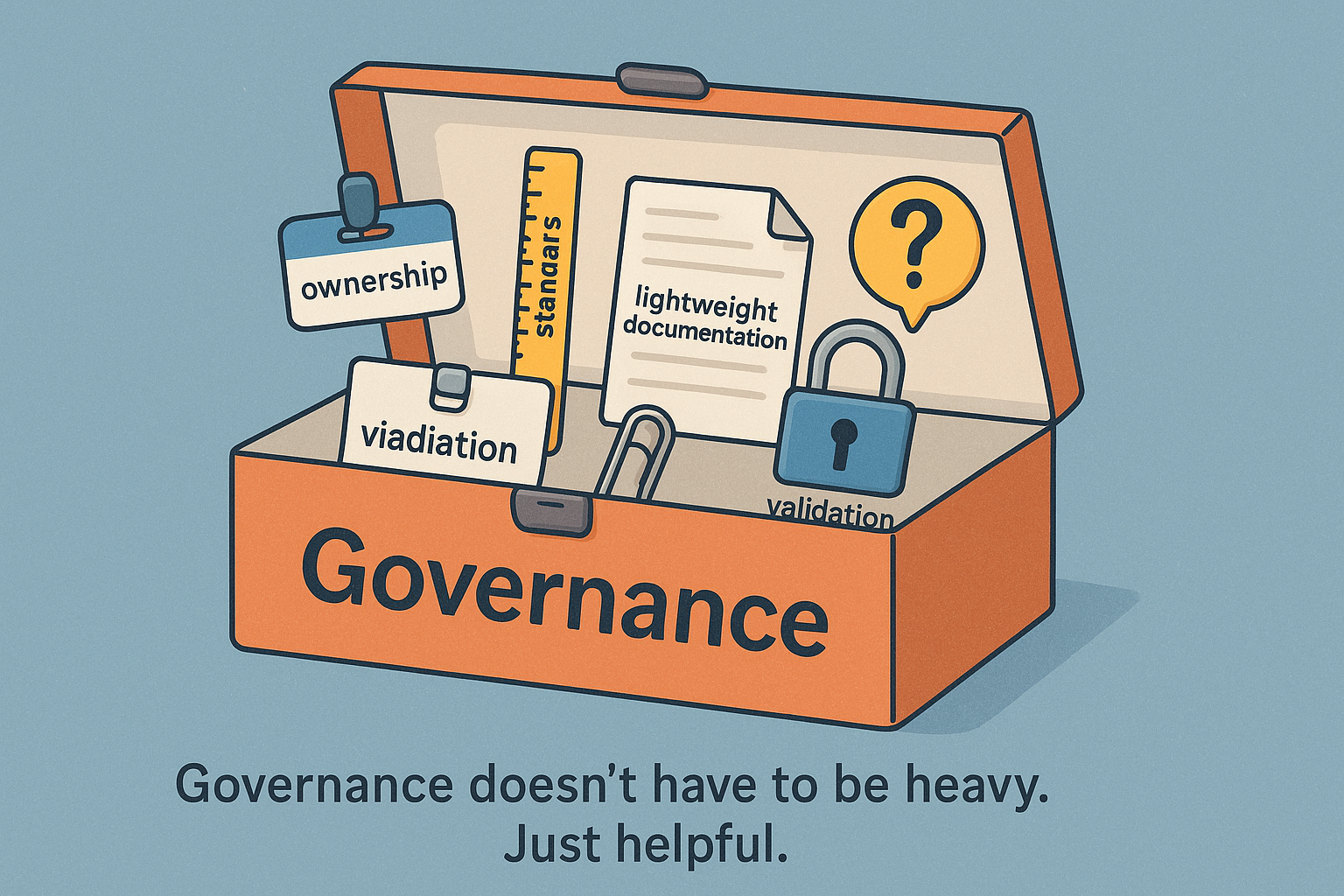Mention “data governance” in a meeting and you’ll usually see people brace for impact. It’s not the most exciting phrase, and it often sounds like something for big teams with formal committees and glossy PDFs.
But governance isn’t about paperwork. It’s about making sure the effort you’ve put into improving your data doesn’t quietly fall apart over time.
It doesn’t have to be heavy. It just has to be clear.
Everyday Governance Is the Goal
At its core, data governance is about:
- Who owns what
- What good looks like
- How to flag or fix problems
- How to avoid breaking things by accident
If you’ve ever had a spreadsheet overwritten, a field redefined without warning, or a report that stopped working after someone “tidied” the source file – you’ve felt the absence of governance.
Governance That Fits Real Workflows
In higher education, we don’t always have formal data roles. Instead, responsibility sits with whoever knows the most about the dataset. That’s fine – but it only works if there’s shared understanding.
Here are a few low-effort ways to embed governance in the day-to-day:
1. Data Stewards by Default
Assign someone who understands the data to act as a point of contact. They don’t need a formal title – just clarity that it’s their job to know what’s going on and help others use the data well.
2. Mini Standards for Key Fields
Don’t write a 40-page spec. Just agree things like:
- How categories should be entered
- What null values mean
- What not to touch without checking first
3. Naming and Versioning
Agree on filenames, folder structures, and a basic versioning process. It stops confusion and makes audits easier.
4. Lightweight Documentation
For high-value datasets, keep a short one-pager: what it’s for, where it came from, who owns it, and what quirks people should know about.
5. Build Checks into Your Process
If you’re building dashboards, Power BI reports, or automated workflows, add validation steps up front. Stop bad data at the door rather than fixing it downstream.

What You’re Protecting
You’ve already done the work to make your data more usable and meaningful. Governance is how you protect that work. It’s the safety net that makes sure:
- Your reports still work next term
- Your definitions stay consistent
- Your colleagues can trust the numbers
Without it, even good data drifts.
In the final post of the series, we’ll look at how to future-proof your efforts – because the point of data fitness isn’t just today’s tasks. It’s building something that can evolve with your needs.